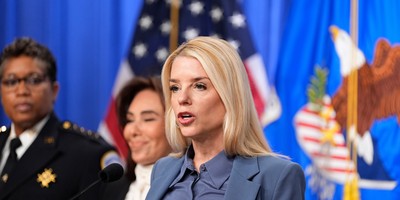As part of her big-brother-knows-best "Let's Move!" campaign to combat childhood obesity, Michelle Obama has been arguing that certain inner-city urban neighborhoods and rural communities are "food deserts," where it's difficult for residents to find access to fresh, healthy, and nutritious food. Mrs. Obama's solution is for the federal government to funnel public money (or, as her esteemed husband might faultily term it, "make an investment") into bringing healthy food retailers into these neighborhoods. But, as with many centrally-planned nanny-state endeavors, the First Lady's taxpayer-funded project fails to attack the real core of the problem, ignores secondary effects, and subsidizes an inefficient use of resources.
If there really isn't any fresh, healthy food to be had in these communities, it's for one reason and one reason only: there's no market for them. Why isn't there a market for them? It may be due to poverty, it may be due to the local culture or other factors, but either way, the people there just don't want to buy fresh plaintains and quinoa. The truest, most efficient, penetrating way of diversifying these communities' available choices is for the federal government to step back and support a robust, thriving national economy that pushes prosperity into every corner of society, bringing more Americans into the middle class with greater disposable incomes and helping goods and services to become ever-less expensive. Liberal policies like organized labor, welfare, bureaucratic regulation, and tariffs are some of the greatest barriers to vigorous economic growth.
Besides, according to the New York Times (of all places!), it appears that even Mrs. Obama's basic premise is flawed (yes, a bureaucratic program operating on a flawed premise is a shocker, I know). There are a couple of new studies out suggesting that, actually, there is no relationship between the type of foods being sold in a particular neighborhood and the rates among its children and young people, and that such neighborhoods are awash with not only more fast food and convenience stores, but also more grocery stores, supermarkets, and full-service restaurants than in affluent neighborhoods:
Recommended
Within a couple of miles of almost any urban neighborhood, “you can get basically any type of food,” said Roland Sturm of the RAND Corporation, lead author of one of the studies. “Maybe we should call it a food swamp rather than a desert,” he said.
Some experts say these new findings raise questions about the effectiveness of efforts to combat the obesity epidemic simply by improving access to healthy foods. Despite campaigns to get Americans to exercise more and eat healthier foods, obesity rates have not budged over the past decade, according to recently released federal data.
“It is always easy to advocate for more grocery stores,” said Kelly D. Brownell, director of Yale University’s Rudd Center for Food Policy and Obesity, who was not involved in the studies. “But if you are looking for what you hope will change obesity, healthy food access is probably just wishful thinking.” ...
Mrs. Obama has also advocated getting schools to serve healthier lunches and communities to build more playgrounds. ...
In one neighborhood in Camden, N.J., where 80 percent of children are eligible for a free school lunch, children bought empanadas, sodas and candy at a grocer, while adults said they had no trouble finding produce. Wedged in among fast food restaurants, convenience stores, sit-down restaurants, take-out Chinese and pizza parlors were three places with abundant produce: Pathmark and Save-A-Lot supermarkets and a produce stand.
The full article has the details of the study, helping to prove that time and time again, liberal pipe dreams translate poorly into real, positive results, and that the free market is a more fair and efficient force for good than any central planning will ever be.
























Join the conversation as a VIP Member